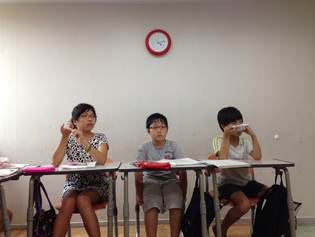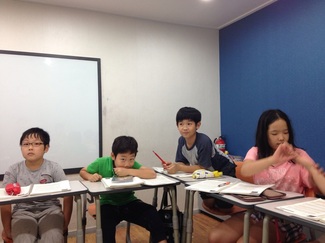
BY CARTER TRIANA
English is a growing necessity in South Korea. This is not only because of Seoul’s close relationship with Washington, D.C., but also because of the growing usage of English on a worldwide scale. Korean students who have mastered the language by the time they graduate from university have a much higher chance of employment than students who have not taken the effort to learn English. Korean parents are well aware of the importance of learning English and take measures to ensure that their children begin receiving English instruction at a young age.
The Korean hagwon is similar to tutoring programs in the United States. Parents pay to send their students to a hagwon so that they can receive extra instruction in a specific academic subject. Students typically go to their hagwon after school and spend several hours there. Although there are hagwons that specialize in nearly every subject, those that teach English tend to be very popular.
PAEDEA, the company at which we con- ducted our internship, has many branches located throughout the city of Seoul where students go to study. The branch that was nearest to the office where we worked was located in Seocho-gu, a district south of the Han River, which divides Seoul in two. During the workday, the time I did not spend in the office, I spent in the Seocho branch of PAEDEA. It took only five minutes to walk from the office to the building where the classrooms were located. After short elevator ride to the fourth floor of the building, I would walk through the reception area and into the teachers’ work- room. At first, all of the teachers seemed very surprised to see me, an American high school student, in the workroom, but after a couple of visits, they became accustomed to my coming and going. Eventually, I developed a relationship with the students and teacher from one class in particular and continued to return to the branch to observe that class.

The other striking thing about the students in this class was their handling of the English language. While they were only 10 years old and all learned Korean as their first language, they were so well-versed in English that they could already converse with others and understand the majority of television shows and movies they watched. I believe this is the best indicator of the willingness of the Korean people to learn and master the English language. Child- hood is the easiest time for one to learn a language and Korean parents have taken advantage of this––using Korea’s extensive hagwon system––to give their children a head start for the future.
Carter Triana is a senior at Pacific Ridge School. He is also a member of the Lingo Online service group at Pacific Ridge, through which he teaches English to international students via Skype. He hopes to study biology and pursue a career in the
medical field.
Carter Triana is a senior at Pacific Ridge School. He is also a member of the Lingo Online service group at Pacific Ridge, through which he teaches English to international students via Skype. He hopes to study biology and pursue a career in the
medical field.
 RSS Feed
RSS Feed